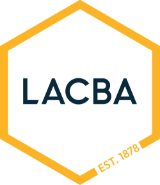
In a world increasingly focused on accountability and righting past wrongs, Retroactive Justice PC 1473.7 stands as a beacon of hope. This California law offers individuals who have been unjustly impacted by their convictions a chance to seek relief. This law signifies a shift in the legal landscape. This post aims to demystify Retroactive Justice PC 1473.7, providing clarity, insights, and a roadmap for those seeking to understand its intricacies.
Table of Contents:
Understanding Retroactive Justice PC 1473.7
At its core, Retroactive Justice PC 1473.7, as defined by California Penal Code 1473.7, offers a legal avenue to vacate convictions. These convictions are often rooted in racial bias, prejudice, or ineffective assistance of counsel, leading to unfair sentences. This law underscores the justice system’s commitment to rectifying past errors. It also helps ensure everyone has access to a fair trial and just sentencing.
Who Is Eligible for Retroactive Justice PC 1473.7?
Retroactive Justice PC 1473.7 is specifically designed for individuals who were either convicted or sentenced based on their race, ethnicity, or national origin. Imagine a scenario where a conviction was secured based on flawed evidence stemming from racial profiling. This is where PC 1473.7 comes in, offering a lifeline and a chance to challenge a system that might have failed them. This law also applies to cases where ineffective assistance of counsel occurred.
Imagine being represented by an attorney who failed to investigate crucial evidence. Or maybe your attorney did not present a compelling defense due to negligence or lack of competence. In such instances, PC 1473.7 allows for the consequences of this subpar representation to be addressed.
What Constitutes “Prejudicial Error”?
Prejudicial error under Penal Code 1473.7 PC is a pivotal element in motions to vacate judgments. It speaks to a significant error during the trial that likely influenced the outcome. Imagine a case tainted by withheld evidence that, if presented, could have led to a different verdict. That’s a classic example of prejudicial error.
It’s not just about an error occurring, but about that error having a tangible impact on the judgment. Another critical aspect highlighted in Penal Code 1473.7 PC is “newly discovered evidence.” Picture this: after a conviction, new evidence surfaces that casts serious doubt on the original verdict. This is where the complaining witness recanted, or there is fresh forensic data contradicting the prosecution’s narrative.
Such revelations are not mere technicalities. They can be powerful tools to revisit past judgments and ensure justice is truly served. These situations may involve a witness recanted testimony, or the sole complaining witness recanted testimony.
Navigating the Legal Maze: The Process
Retroactive Justice PC 1473.7 doesn’t offer automatic relief; it necessitates a well-defined legal process. Individuals seeking relief under this law must file a motion in court, presenting evidence demonstrating how their case meets the criteria. The filing of this motion is time-sensitive. Section 745 mandates that such motions must be submitted “without undue delay” from when the evidence supporting the claim is discovered.
The evidence presented might involve discriminatory practices within the justice system or inadequate legal representation. It may even involve proof of actual innocence. Remember, a successful PC 1473.7 motion often hinges on meticulously collected and compelling evidence. This may involve the moving party showing their defense counsel failed to advise them of the potential adverse immigration consequences of a plea.
The Role of a Skilled Attorney in Retroactive Justice Cases
Navigating the intricacies of Retroactive Justice PC 1473.7 demands legal expertise. That’s where an experienced immigration lawyer well-versed in this area of law can be an invaluable asset. They understand the nuances of the law, the evidentiary requirements, and the strategies involved in presenting a compelling case for relief. An experienced attorney can help determine if a habeas petition is the right course of action in your case.
What Happens After a Motion is Filed?
Once the motion is filed, the court reviews the evidence and arguments. If the court finds merit, the previous conviction can be vacated. In such cases, individuals might be granted a new trial. The prosecution might also choose to re-try the case or even dismiss the original charges altogether.
The court may consider factors such as whether the noncitizen defendant was in criminal custody at the time of their plea. The court will also consider if the defendant knowingly accepted the plea despite understanding the potential adverse immigration consequences.
Why Retroactive Justice Matters
Retroactive Justice PC 1473.7 is a potent legal tool that transcends mere legal technicalities. Its impact extends to real lives, families, and communities disproportionately affected by a flawed system. It speaks volumes about California’s commitment to acknowledging past injustices and striving for a future where justice isn’t merely dispensed, but dispensed fairly and equitably.
This law stands as a stark reminder that even within a complex legal framework, there’s always room for reflection, reevaluation, and most importantly, redemption. For noncitizen defendants, this law provides a critical opportunity to challenge unlawful convictions that can have severe and lasting immigration consequences, including deportation. It aims to ensure that past injustices do not lead to the unlawful deportation of individuals years later.
Conclusion
Retroactive Justice PC 1473.7 serves as a beacon of hope, allowing individuals a chance to seek a remedy for injustices. It presents an avenue for challenging convictions tarnished by prejudice or compromised legal counsel. By facilitating the correction of wrongful convictions and mitigating the lingering effects of past errors, it signifies an important stride towards a more equitable justice system.




